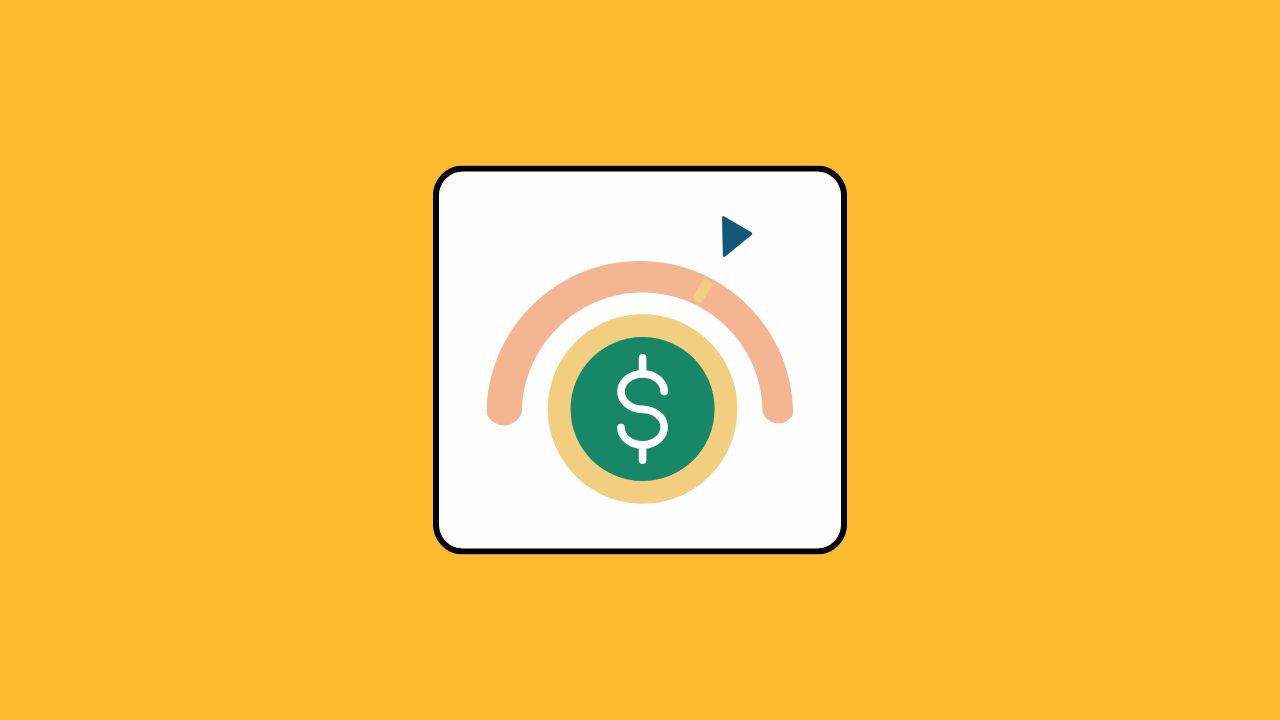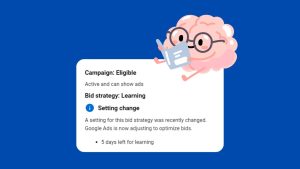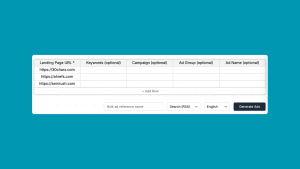Ad pacing is essential for keeping your Google Ads campaigns on track. It ensures your budget is spent evenly over time, so you avoid overspending early or running out of funds at the end of the month. Here’s how to master ad pacing in Google Ads and maximize your campaign performance.
Table of Contents
- What is Ad Pacing?
- How to Monitor Ad Pacing in Google Ads
- What to Do If Your Google Ads Campaigns Are Under Spending
- What to Do If Your Google Ads Campaigns Are Over Spending
- Scripts for Managing Google Ads Pacing
- Pacing Is Just One Piece of Google Ads Success
- Reference Formulas for Ad Spend and Pacing
- FAQs on Google Ads Spend Pacing
What is Ad Pacing?
Ad pacing in Google Ads refers to how your budget is spent over a 30.4-day billing cycle. Google uses this time frame to average daily spend across a month. Some days may go over or under your daily budget by up to 20%, but it evens out to your set monhly budget.
Key things to remember:
- Changing budgets resets pacing: Adjusting your daily budget restarts the 30.4-day cycle.
- Bid strategies impact spend: For example, Max Conversions and Max Conversion Value tend to spend the full budget, while tROAS and tCPA may spend less if Google struggles to meet your targets.
How to Monitor Ad Pacing in Google Ads
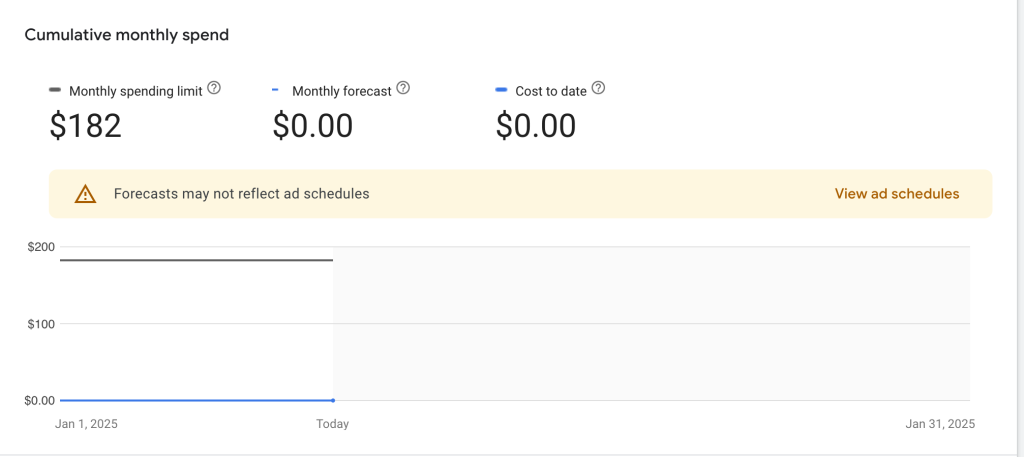
Monitoring pacing is crucial to stay on top of your budget. Here’s how to track it effectively:
- Use the Campaign Dashboard: Check your daily spend against your budget in the Google Ads interface.
- Leverage the Insights Tab: This shows budget trends and performance metrics to help you identify issues.
- Enable Budget Reports: Google Ads offers reports that highlight budget pacing versus performance goals.
- Use Google Sheets or Data Studio: Export your data to these tools to create custom pacing trackers.
We created a quick online tool to calculate your ad spend pace for a spot check.
Setting Up a Google Ads Budget Tracker
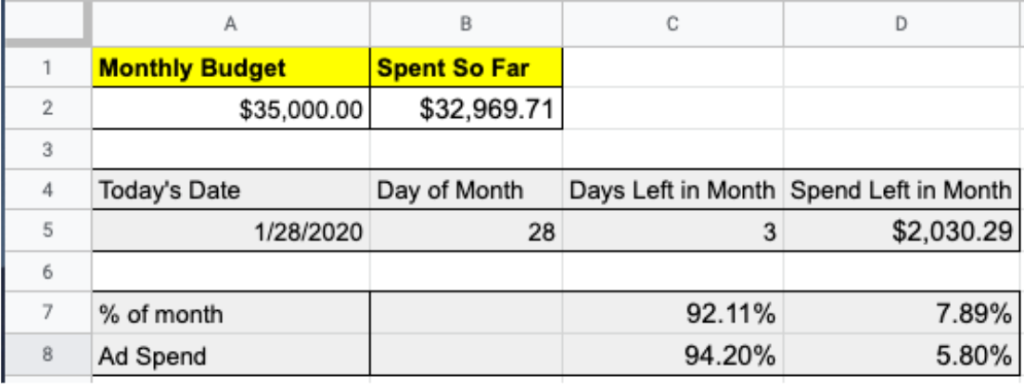
You can build a simple pacing tracker in Google Sheets:
- Columns: Include daily budget, actual spend, remaining days, and remaining budget.
- Formulas: Use
=Target Budget - Actual Spendto calculate how much budget is left. - Automation: Connect Google Ads to your sheet using tools like Supermetrics or Google Ads API for real-time updates.
Here’s a Google Docs guide on how to setup your pacing tracker.
What to Do If Your Google Ads Campaigns Are Under Spending
If your campaigns aren’t spending enough, it may be due to:
- Low bids: Your bids aren’t competitive enough to win auctions.
- Narrow targeting: Limited keywords, audiences, or geographies restrict traffic.
- Bid strategy limits: Strategies like tROAS or tCPA may throttle spend to meet performance targets.
To fix under pacing:
- Raise bids: Increase bids to win more auctions and capture more traffic.
- Broaden targeting: Add new keywords, expand location settings, or target broader audiences.
- Switch bid strategies: Consider Max Conversions or Max Conversion Value to increase spending potential.
- Review ad schedules: Ensure your ads run during peak times when your audience is most active.
What to Do If Your Google Ads Campaigns Are Over Spending
Overspending early can deplete your budget before the end of the month. Here’s how to bring it back on track:
- Reduce budgets: Lower daily budgets for campaigns that are spending too quickly.
- Pause low performers: Identify and pause campaigns or ad groups with poor ROI.
- Refine targeting: Narrow your keywords or audience to focus on the most profitable segments.
- Adjust schedules: Limit ad delivery to high-performing times of day or specific days of the week.
Scripts for Managing Google Ads Pacing
Scripts can be a helpful tool for managing pacing in Google Ads. While they can automate budget adjustments or monitoring tasks, they must be used carefully to avoid disrupting Google’s algorithms. If you plan to use scripts, focus on simple automations, like budget alerts, and test them thoroughly before implementation.
Pacing Is Just One Piece of Google Ads Success
Pacing is important, but it’s not the only factor in managing a successful Google Ads campaign. Always align your spend with your performance goals. Max Conversions and Max Conversion Value can help you spend the full budget, but they require good data, solid targeting, and creative. Avoid frequent budget changes, as they disrupt Google’s bidding algorithms. Consider setting account-level budgets to automatically cap spending across all campaigns.
Reference Formulas for Ad Spend and Pacing
Here are some handy formulas to help you calculate and monitor your ad pacing:
- Daily Budget
Daily Budget = Monthly Budget ÷ 30.4
Use this to set your average daily budget based on your monthly goal. - Remaining Budget
Remaining Budget = Target Budget - Actual Spend
This helps you track how much of your budget is left. - Projected Monthly Spend
Projected Spend = (Actual Spend ÷ Days Passed) × Total Days in Period
Use this to estimate whether you’re on track to hit your monthly budget. - Pacing Percentage
Pacing % = (Actual Spend ÷ Budgeted Spend) × 100
A percentage above 100% means you’re overspending, while below 100% means you’re underspending. - Daily Adjustment
Adjusted Daily Budget = Remaining Budget ÷ Remaining Days
Use this to adjust daily budgets mid-cycle to stay on track. - Spend Variance
Spend Variance = Actual Spend - Budgeted Spend
This shows how much you’re overspending or underspending compared to your planned budget.
These formulas can be implemented directly in Google Sheets or Excel to create automated pacing trackers for your campaigns.
FAQs on Google Ads Spend Pacing
What happens if I change my budget?
Changing your budget resets Google’s 30.4-day pacing cycle. Monitor closely if you adjust it mid-month.
Should I match my tracker exactly?
Yes, but remember Google can overspend by up to 20% on any given day. Plan your daily budget with this in mind.
What if my campaign is under pacing?
Raise bids, expand targeting, or switch to a more aggressive bid strategy like Max Conversions.
What if my campaign is over pacing?
Lower budgets, pause low performers, or narrow targeting to slow spending.
How often should I track pacing?
Daily tracking is ideal for active campaigns, especially during critical periods like the start of a new budget cycle or promotional events. At a minimum, review pacing weekly to identify and address any significant deviations early.
How does seasonality affect pacing?
Seasonality can dramatically impact campaign performance and pacing. For example, during holiday seasons or sales events, you might see higher demand and faster spending. Adjust your daily budgets and bids proactively to account for these fluctuations. Use historical performance data to anticipate seasonal trends and avoid surprises.
By using formulas, monitoring tools, and proactive adjustments, you can ensure your Google Ads campaigns stay on budget and perform consistently throughout the month.


